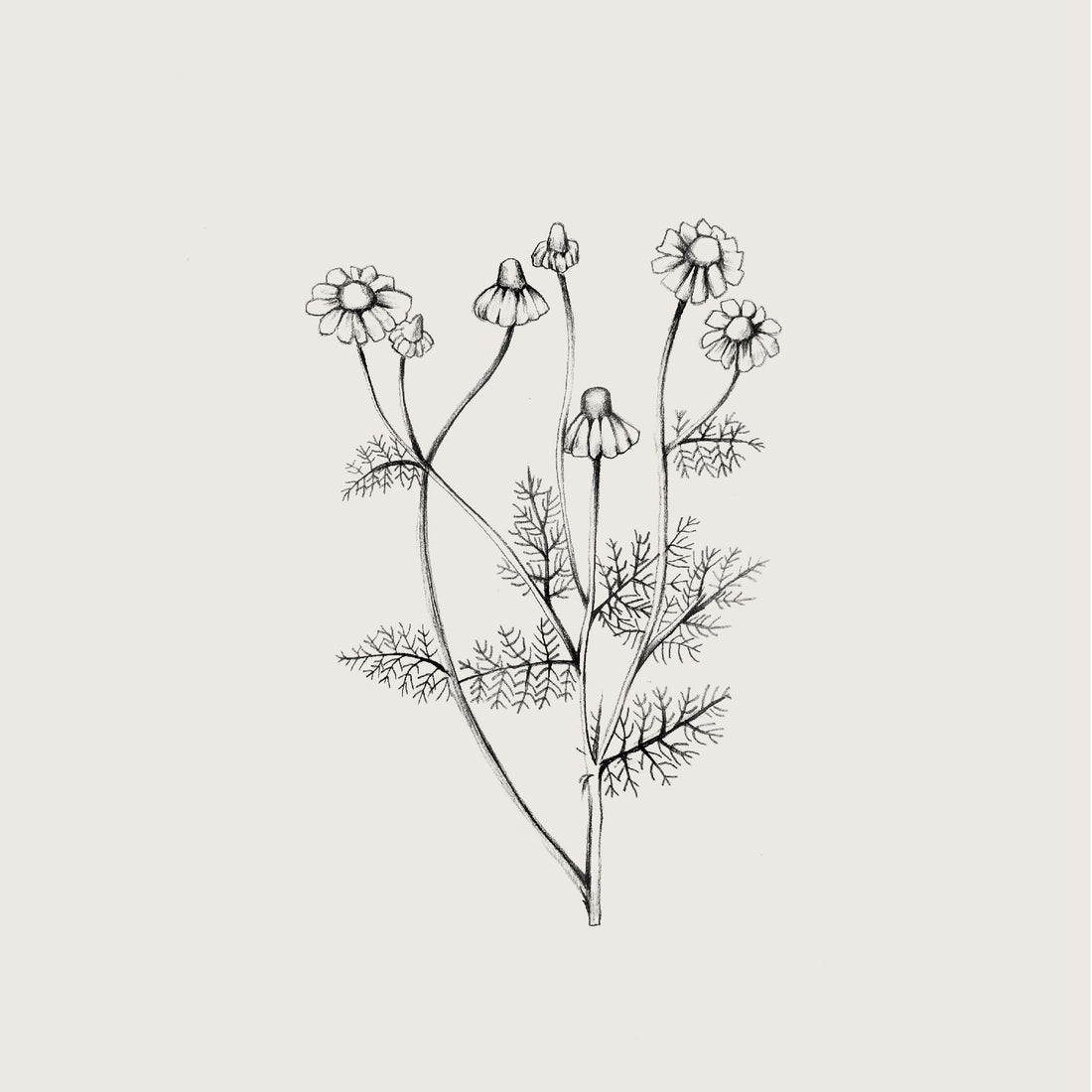
PLANT PROFILE : Chamomile ~ Matricaria recutita
Share

Description
Belonging to the Asteraceae family, Chamomile is an aromatic, erect and glabrous annual herb that grows to 30cm tall. Its leaves are pale green and alternate, stems are round and hollow. The flowers are white, approximately 1cm long and 5-toothed. Chamomile has a pleasant aromatic scent and smells remarkably like crushed apples when bruised. Taste is slightly bitter and herbaceous.
Habitat and cultivation
Cultivated and naturalised worldwide, Chamomile originates from Europe and West Asia. It prefers rich soil and open sun. It is grown from seed, will self sow to give several crops a year when in ideal position, but will not self-sow in extremes of wet or heat. Drought and frost resistant.
Parts Used
Flower heads collected at the start of flowering.
Active Constituents
Volatile oils, sesquiterpenes / matricin, flavonoids, cumarins, up to 10% mucilage / polysaccharides. Chamomile is mineral rich, containing magnesium, potassium, calcium, iron, zinc, iodine and manganese.
Actions
Relaxant – Promotes relaxation
Carminative – Improves digestion and relieves discomfort of flatulence
Antispasmodic – Reduces or prevents excessive involuntary muscular contractions
Anti-inflammatory – Reduces inflammation
Anti-allergic – Prevents or relieves allergies
Vulnerary – Used to hasten the healing of wounds
Anti-microbial – Destroys or inhibits growth of microorganisms
Mild sedative – Relaxes and reduces nerve conduction
Therapeutics
Chamomile has been valued for its relaxant effect for hundreds of years. It’s complex constituents provide antispasmodic and anxiolytic actions making this herb calming for both the gastrointestinal and central nervous systems.
To further compliment its positive effects in the gut, its antimicrobial actions combat Staphylococcus aureus, Streptococcus, Candida albicans and various viruses. Chamomile is very effective at alleviating other common gut discomforts such as flatulence, colic and indigestion.
It is noted as a significant nervous system relaxant and is used for nervous tension, hyperactivity, insomnia, headaches and migraines.
Externally, Chamomile is used for its vulnerary action, to dry out weeping wounds and promote skin regeneration. It is also well known for its potent anti-inflammatory action and is used to alleviate symptoms of contact dermatitis, atopic eczema, nappy rash, mastitis, acne and sunburn.
Safety / Contraindications / Interactions
Chamomile is generally considered to be safe, however should be avoided by those with a known allergy to the Asteraceae family. Allergic reactions are extremely rare.
Traditional uses
Use in the bath to ease weariness and pain.
Chamomile helps to heal ailing plants if planted nearby.
Chamomile’s main volatile oil constituent Matricin is converted to chamazulene by steam distillation and gives Matricaria oil a remarkable blue colour, the deepness of which varies with the amount of azulene present.
The flowers should be processed soon after harvesting due to the volatile oils decreasing on drying. They can be preserved by freezing until ready for processing.
References;
Materia Medica of Western Herbs by Carole Fisher
Herbs and Natural Supplements; An evidence-based guide 3rd edition by Lesley Braun and Marc Cohen
A Clinical Guide to Blending Liquid Herbs by Kerry Bone
The Constituents of Medicinal Plants by Andrew Pengelly
